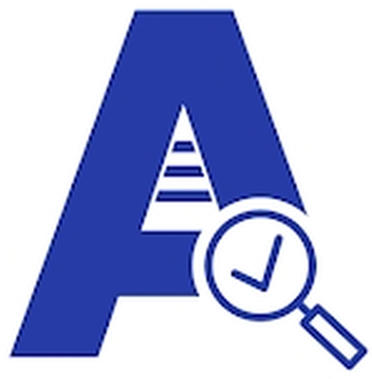HACCP Based SOPs Checklist
HACCP based SOPs checklist inspection helps ensure a structured and thorough evaluation process,

Key Components of HACCP Based SOPs
- Hazard Analysis:
- Identify potential biological, chemical, and physical hazards.
- Determine which hazards are significant and must be addressed in the HACCP plan.
- Critical Control Points (CCPs):
- Identify points in the process where control is essential to prevent or eliminate hazards.
- Establish CCPs for each identified hazard.
- Critical Limits:
- Set maximum or minimum values for temperature, time, pH, and other factors at CCPs to control hazards.
- Ensure that critical limits are measurable and observable.
- Monitoring Procedures:
- Develop procedures to monitor CCPs.
- Ensure consistent monitoring to maintain control over the process.
- Corrective Actions:
- Define actions to take when monitoring shows a deviation from critical limits.
- Document and record corrective actions.
- Verification Procedures:
- Establish methods to verify that the HACCP system is working effectively.
- Include activities like calibration of instruments, review of records, and testing of final products.
- Record Keeping:
- Maintain records of hazard analyses, CCP determinations, monitoring activities, corrective actions, and verification procedures.
- Ensure documentation is accurate and up-to-date.
Examples of HACCP-Based SOPs
- Receiving Raw Materials:
- Verify the temperature of refrigerated and frozen products upon receipt.
- Inspect packaging for signs of damage or contamination.
- Record the supplier’s information and the condition of the products.
- Storage:
- Store raw materials and finished products at appropriate temperatures.
- Implement a first-in, first-out (FIFO) inventory system.
- Monitor and record temperature readings regularly.
- Cooking:
- Cook food to the required internal temperature to kill pathogens.
- Use calibrated thermometers to check temperatures.
- Record cooking temperatures and times.
- Cooling:
- Cool cooked food from 135°F to 70°F within 2 hours and from 70°F to 41°F within an additional 4 hours.
- Use shallow pans, ice baths, or blast chillers to speed up the cooling process.
- Record the time and temperature during the cooling process.
- Cleaning and Sanitizing:
- Use appropriate cleaning agents and sanitizers for equipment and surfaces.
- Follow proper cleaning and sanitizing procedures to prevent cross-contamination.
- Document cleaning schedules and procedures.
- Personal Hygiene:
- Ensure employees wash hands properly and frequently.
- Provide training on personal hygiene and food safety practices.
- Monitor and enforce hygiene practices in the facility.
- Preventing Cross-Contamination:
- Separate raw and cooked foods to prevent cross-contamination.
- Use color-coded cutting boards and utensils.
- Implement proper storage practices to avoid contact between raw and ready-to-eat foods.
Implementation Tips
- Training: Ensure all employees are trained on HACCP principles and specific SOPs.
- Consistency: Regularly review and update SOPs to reflect changes in processes, equipment, or regulations.
- Documentation: Keep thorough records to demonstrate compliance with HACCP requirements.
- Continuous Improvement: Regularly review the effectiveness of the HACCP system and make necessary adjustments.


Using a eAuditor Audits & Inspections for HACCP Based SOPs


Performing Hazard Analysis and Critical Control Points HACCP based SOPs (Standard Operating Procedures) checklist inspection using a eAuditor Audits & Inspections involves a structured and systematic approach to ensure food safety and compliance with HACCP principles. Here’s a step-by-step guide to conducting the inspection:
1. Preparation
- Set Up the eAuditor Audits & Inspections:
- Install: Ensure the eAuditor Audits & Inspections app is installed on your device.
- Configure: Set up the eAuditor Audits & Inspections with the HACCP based SOPs checklist, including categories and specific items to be inspected.
- Customize the Checklist:
- Tailor: Adjust the checklist in the eAuditor Audits & Inspections to reflect the specific HACCP principles and SOPs relevant to your operation.
- Gather Equipment:
- Mobile Device: Ensure your device is fully charged and operational.
- Additional Tools: Prepare any extra tools needed (e.g., thermometer, pH meter) if required for the inspection.
2. Conduct the Inspection
- Log In:
- Open the eAuditor Audits & Inspections app and log in with your credentials.
- Select Inspection Type:
- Choose the type of inspection (e.g., routine, follow-up) and specify the location or department.
- Start Inspection:
- Begin the inspection process by navigating to the HACCP-based SOPs checklist in the eAuditor Audits & Inspections.
3. Complete the HACCP Based SOPs Checklist
A. Preliminary Steps
- Assemble HACCP Team:
- Verify Team: Ensure the HACCP team is assembled and roles are clearly defined.
- Document: Record any changes or updates to the team composition.
- Describe Product:
- Check Description: Ensure that the product description, including ingredients and processing methods, is accurate and up-to-date.
- Document: Note any discrepancies in product descriptions.
- Identify Intended Use:
- Verify Use: Confirm that the intended use and target consumer of the product are correctly identified.
- Document: Record any issues with intended use identification.
- Construct Flow Diagram:
- Review Flow Diagram: Ensure the flow diagram accurately represents the process steps.
- Document: Note any inaccuracies or updates needed in the flow diagram.
- On-Site Confirmation:
- Validate Diagram: Confirm the accuracy of the flow diagram through on-site verification.
- Document: Record any discrepancies found during the on-site confirmation.
B. Hazard Analysis
- Identify Hazards:
- Check Identification: Ensure all potential biological, chemical, and physical hazards are identified.
- Document: Record any missed hazards or necessary updates.
- Determine Control Measures:
- Verify Measures: Ensure appropriate control measures are identified for each hazard.
- Document: Note any gaps in control measures.
C. Determine Critical Control Points (CCPs)
- Identify CCPs:
- Verify CCPs: Ensure all critical control points are identified and justified.
- Document: Record any discrepancies or missed CCPs.
D. Establish Critical Limits
- Set Critical Limits:
- Check Limits: Ensure critical limits are established for each CCP.
- Document: Note any issues with the critical limits.
E. Establish Monitoring Procedures
- Verify Monitoring:
- Check Procedures: Ensure monitoring procedures for each CCP are clearly defined and implemented.
- Document: Record any gaps or issues with monitoring procedures.
F. Establish Corrective Actions
- Check Corrective Actions:
- Verify Actions: Ensure corrective actions are established and documented for deviations from critical limits.
- Document: Note any deficiencies in corrective action plans.
G. Establish Verification Procedures
- Verify Procedures:
- Check Verification: Ensure verification procedures are established to confirm that the HACCP system is working effectively.
- Document: Record any issues with verification procedures.
H. Establish Record-Keeping and Documentation
- Review Records:
- Check Records: Ensure all records and documentation are accurate, complete, and up-to-date.
- Document: Note any gaps or discrepancies in record-keeping.
4. Finalize the Inspection
- Review Data:
- Verify Entries: Review all data entered into the app for completeness and accuracy.
- Generate Report:
- Create Report: Use the app to generate a detailed inspection report, including observations, non-compliances, and recommendations.
- Submit Report:
- Send Report: Submit the report through the app to relevant stakeholders or a central database.
- Discuss Findings:
- Meeting: Discuss findings with management and agree on necessary corrective actions.
5. Follow-Up
- Monitor Corrective Actions:
- Track Progress: Use the app to monitor the progress of corrective actions and improvements.
- Schedule Re-Inspection:
- Plan Follow-Up: Schedule follow-up inspections to ensure corrective actions have been implemented effectively.
- Provide Feedback:
- Share Insights: Offer feedback and additional training if needed to address specific issues.
Using the eAuditor Audits & Inspections
- Dashboard:
- Overview: Access a dashboard for an overview of inspection findings, non-compliances, and corrective actions.
- Notifications: Set up notifications for follow-up actions or upcoming inspections.
- Real-Time Updates:
- Sync Data: eAuditor Audits & Inspections syncs data in real-time to keep records accurate and up-to-date.
- Analytics:
- Analyze Trends: Use the app’s analytics features to identify trends, such as recurring issues or areas needing improvement.
